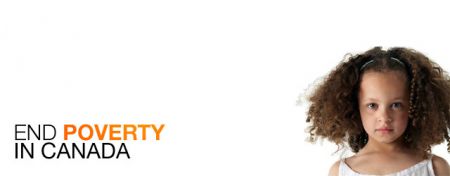This column was originally published in the Cape Breton Independent
This year marks the 25th anniversary of a House of Commons amendment that vowed to eradicate child poverty by the year 2000. Now, 14 years past that deadline, the 2014 Report Card on Child and Family Poverty in Nova Scotia shows poverty has not only increased since 1989, it has increased substantially. And in Cape Breton, 1 in 3 children live in poverty.
The Report Card on Child and Family Poverty 2014, titled A Generation of Broken Promises, is published by the Canadian Centre for Policy Alternatives and it gives a progress report on the commitment made by the House of Commons and tracks poverty in our province.
Poverty in Nova Scotia is 22.7 percent higher than it was in 1989 with 37,900 children now living below the after-tax low income cut-off, which translates into 1 in 5 children. Manitoba and Saskatchewan are the only provinces with higher rates of child poverty.
Cape Breton has the highest rate of child poverty in the Nova Scotia with 32.6 percent of children living in poverty. Nationally, 14 percent of children live in poverty, meaning Canada ranks a lowly 25th out of 35 industrialized countries according to UNICEF.
Frank notes that it is not only poverty rates that are increasing in Nova Scotia, but inequality too. “Rising inequality, the gap between the rich and the poor, is increasing and impacting the wellness of our community,” says Frank.
Frank emphasizes that it is not only a child poverty issue, but a family poverty issue because “mothers and fathers are experiencing the same thing.” She says that a majority of these families are not only living below the poverty line, but well below it, which is why the minor adjustments made by the government over the years to address poverty are not proving effective.
“In a country like ours, it’s easy for poverty to be ignored,” says Frank. “It’s quite invisible and it’s time for people to agree it’s not okay.”
Nova Scotia also has the second-highest rate of food insecurity for children at 17.5 percent, behind only Nunavut. The problem is prevalent in Cape Breton and JoAnna Latulippe-Rochon, Director of the Cape Breton Family Resource Centre, notes the solution “is beyond just supporting food banks. We need to have a dignified way for people to provide food for their families.”
The report makes several recommendations for ending child poverty. Frank stated that increasing the child tax benefit would be the most “effective and achievable” for two reasons. Firstly, the child tax benefit is currently in place and therefore would not require any new program development, which means it would be easy and relatively quick to change it if the political will exists. And secondly, adjusting the child tax benefit would be most effective because it goes to those who are most affected by child and family poverty.
“We’ve been persuaded to take some comfort in how resilient some children can be. But here’s the bottom line…Our lack of investment in child poverty reduction has destroyed or diminished an untold number of young lives over this 25-year period,” states the report.
“This has to be my problem, your problem, everyone’s problem. And then the political will will be there,” says LaTulippe-Rochon.
Author: Maria LeBlanc is a member of the J. B. McLachlan Media Collective.



